Energy 1,213 kJ (290 kcal) Sugars 74.72 g Fat 0.1 g | Carbohydrates 74.73 g Dietary fiber 0 g Protein 0 g | |
 | ||
Similar Sugar, Brown sugar, Water, Rum, Gingerbread | ||
Magical inch loss with molasses original sweetener pomegranate benefits
Molasses, or black treacle (British, for human consumption; known as molasses otherwise), is a viscous by-product of refining sugarcane or sugar beets into sugar. Molasses varies by amount of sugar, method of extraction, and age of plant. Sugarcane molasses is agreeable in taste and aroma, and is primarily used for sweetening and flavoring foods in U.S., Canada and elsewhere, while sugar beet molasses is foul-smelling and unpalatable, so it is mainly used as an animal feed additive in Europe and Russia, where it is chiefly produced. It is a defining component of fine commercial brown sugar.
Contents
- Magical inch loss with molasses original sweetener pomegranate benefits
- Cane molasses
- Blackstrap molasses
- Sugar beet molasses
- Unsulphured molasses
- Other forms
- Food products and additives
- Chemical
- Industrial
- Horticultural
- Nutritional information
- Important minerals
- Name
- References

Sweet sorghum syrup may be colloquially called "sorghum molasses" in the southern United States. Similar products include treacle, honey, maple syrup, corn syrup, and invert syrup. Most of these alternative syrups have milder flavors.
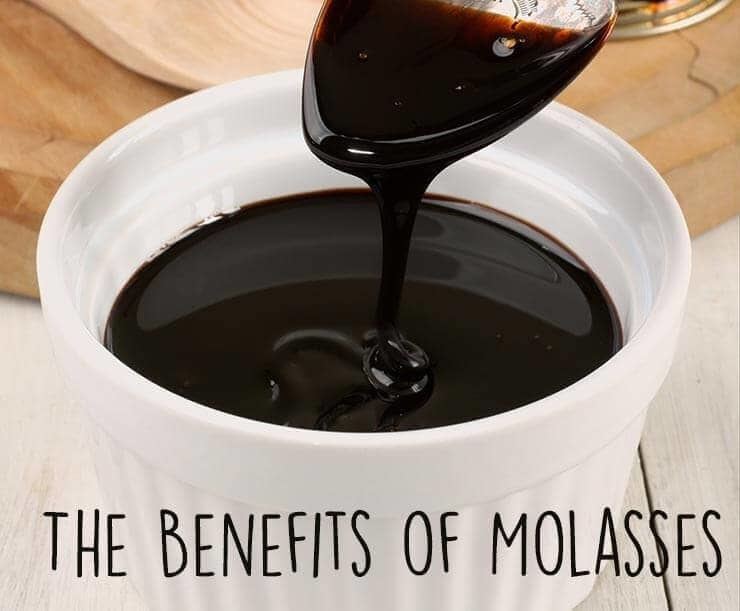
Cane molasses
Cane molasses is a common ingredient in baking and cooking.
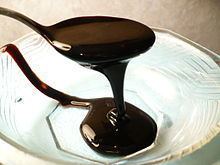
To make molasses, sugar cane is harvested and stripped of leaves. Its juice is extracted, usually by cutting, crushing, or mashing. The juice is boiled to concentrate it, promoting sugar crystallization. The result of this first boiling is called first syrup, and it has the highest sugar content. First syrup is usually referred to in the Southern states of the U.S. as cane syrup, as opposed to molasses. Second molasses is created from a second boiling and sugar extraction, and has a slightly bitter taste.
Blackstrap molasses
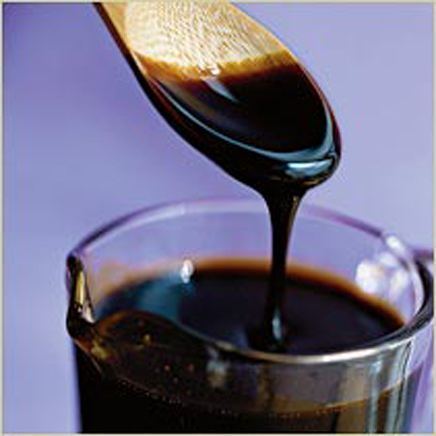
The third boiling of the sugar syrup yields dark, viscous blackstrap molasses, known for its robust flavor. The majority of sucrose from the original juice has crystallized and been removed. The caloric content of blackstrap molasses is mostly due to the small remaining sugar content. Unlike highly refined sugars, it contains significant amounts of vitamin B6 and minerals, including calcium, magnesium, iron, and manganese; one tablespoon provides up to 20% of the recommended daily value of each of those nutrients. Blackstrap is also a good source of potassium. Blackstrap molasses has long been sold as a dietary supplement.
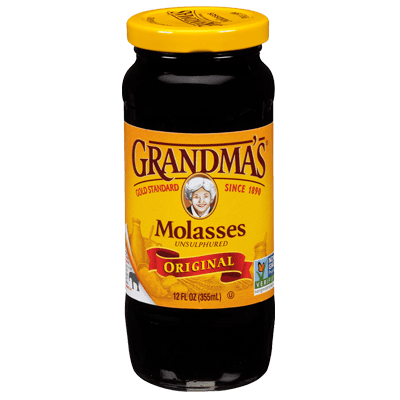
Blackstrap molasses is significantly more bitter than "regular" molasses. It is sometimes used in baking or for producing ethanol, as an ingredient in cattle feed, and as fertilizer.
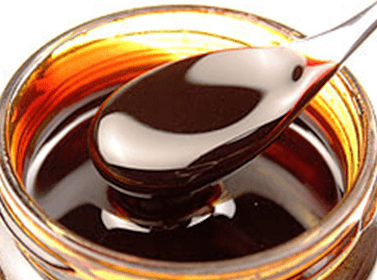
The term "black-strap" or "blackstrap" is an Americanism dating from 1875 or before. Its first known use is in a book by detective Allan Pinkerton in 1877.
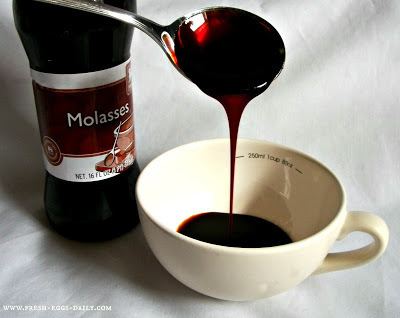
The exaggerated health benefits sometimes claimed for blackstrap molasses were the topic of a 1951 novelty song, Black Strap Molasses, recorded by Groucho Marx, Jimmy Durante, Jane Wyman, and Danny Kaye.
Sugar beet molasses
Molasses made from sugar beets differs from sugarcane molasses. Only the syrup left from the final crystallization stage is called molasses. Intermediate syrups are called high green and low green, and these are recycled within the crystallization plant to maximize extraction. Beet molasses is 50% sugar by dry weight, predominantly sucrose, but contains significant amounts of glucose and fructose. Beet molasses is limited in biotin (vitamin H or B7) for cell growth; hence, it may be supplemented with a biotin source. The nonsugar content includes many salts, such as calcium, potassium, oxalate, and chloride. It contains betaine and the trisaccharide raffinose. These are a result of concentration from the original plant material or chemicals in processing, and make it unpalatable to humans. So, it is mainly used as an additive to animal feed (called "molassed sugar beet feed") or as a fermentation feedstock.
Extracting additional sugar from beet molasses is possible through molasses desugarization. This exploits industrial-scale chromatography to separate sucrose from nonsugar components. The technique is economically viable in trade-protected areas, where the price of sugar is supported above market price. As such, it is practiced in the U.S. and parts of Europe. Molasses is also used for yeast production.
Unsulphured molasses
Many kinds of molasses on the market come branded as "unsulphured" (using the British spelling of sulfur). Many foods, including molasses, were once treated with sulfur dioxide as a preservative, helping to kill off molds and bacteria. Sulfur dioxide is also used as a bleaching agent, and helped to lighten the color of molasses. Most brands have veered away from sulphured molasses, due to the relatively stable natural shelf life of untreated molasses, the off flavor that can arise from using sulfur dioxide, and because sulfur dioxide in high doses can be toxic.
Other forms
In Middle Eastern cuisine, molasses is produced from carob, grapes, dates, pomegranates, and mulberries. In Nepal it is called chaku (Nepal Bhasa: चाकु) and used in the preparation of Newari foods such as yomari.
Food products and additives
Molasses can be used:
Chemical
Industrial
Horticultural
Nutritional information
Molasses contains no protein or dietary fibre and close to no fat. Each tablespoon (20 g) contains 58 kcal (240 kJ), 14.95 g of carbohydrates, including 14.94 g of sugar divided between sucrose, glucose and fructose in rough proportions of 2:1:1.
Important minerals
Minerals in meridian/organic/pure blackstrap per 100 g (equivalent to 5 tablespoons):
Name
The word comes from the Proto-Indo-European mélid. Cognates include Ancient Greek μέλι (méli) (honey), Latin mel, Spanish melaza (molasses), French miel (honey), and Portuguese melaço.
